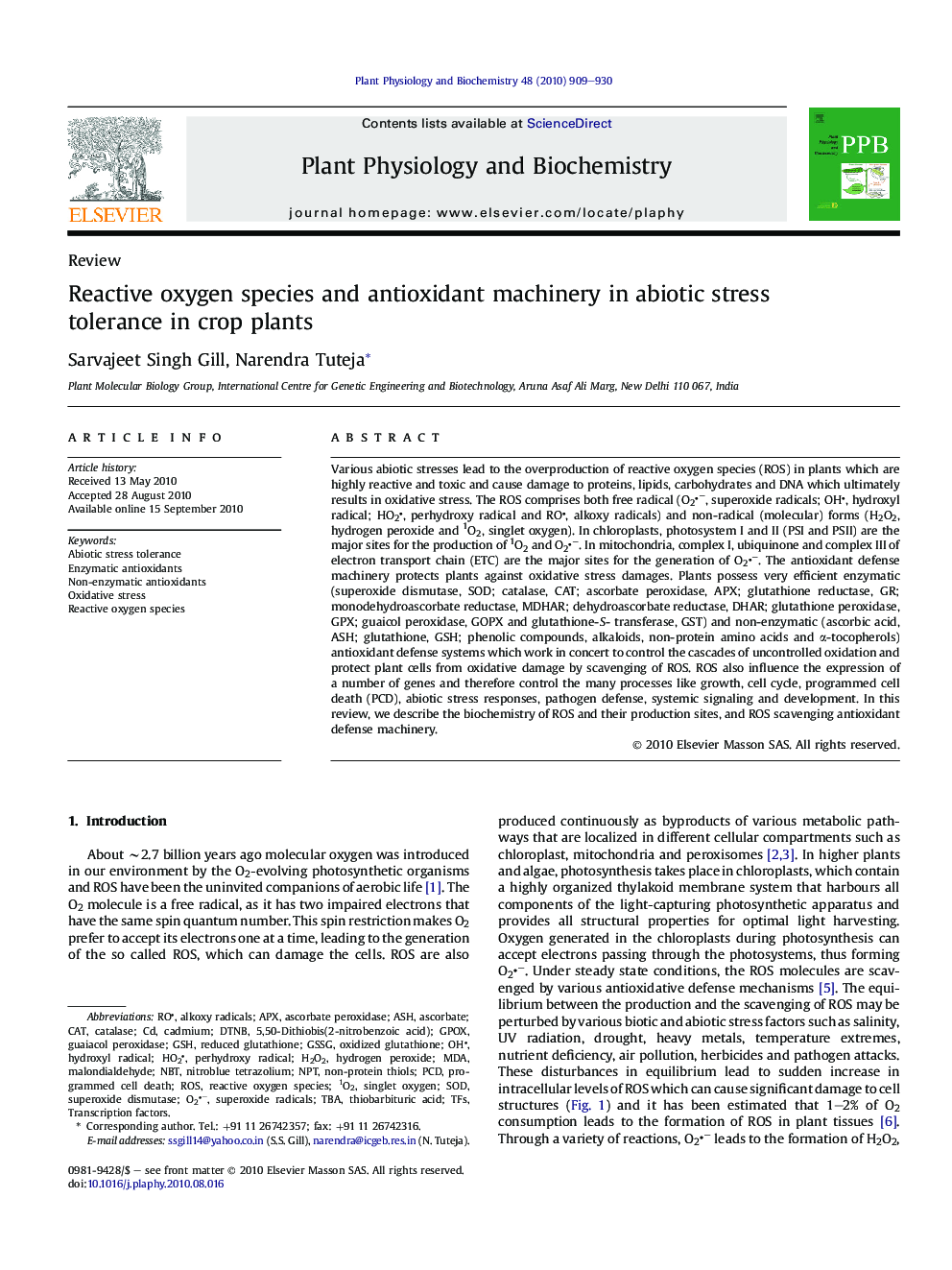| Article ID | Journal | Published Year | Pages | File Type |
|---|---|---|---|---|
| 2016405 | Plant Physiology and Biochemistry | 2010 | 22 Pages |
Abstract
⺠Various abiotic stresses lead to the overproduction of reactive oxygen species (ROS) in plants which are highly reactive and toxic and cause damage to proteins, lipids, carbohydrates, DNA which ultimately results in oxidative stress. ⺠The antioxidant defense machinery protects plants against oxidative stress damages. ⺠Plants possess very efficient enzymatic (superoxide dismutase, SOD; catalase, CAT; ascorbate peroxidase, APX; glutathione reductase, GR; monodehydroascorbate reductase, MDHAR; dehydroascorbate reductase, DHAR; glutathione peroxidase, GPX; guaicol peroxidase, GOPX and glutathione-S- transferase, GST) and non-enzymatic (ascorbic acid, ASH; glutathione, GSH; phenolic compounds, alkaloids, non-protein amino acids and α-tocopherols) antioxidant defense systems which work in concert to control the cascades of uncontrolled oxidation and protect plant cells from oxidative damage by scavenging of ROS. ⺠ROS also influence the expression of a number of genes and therefore control the many processes like growth, cell cycle, programmed cell death (PCD), abiotic stress responses, pathogen defense, systemic signaling and development. In this review, we describe the biochemistry of ROS and their production sites, and ROS scavenging antioxidant defense machinery.
Keywords
GSSGGPOXMDAHO21O2PCDNPTTFsDTNBNBTAPXGSHTBACATO2−ROSnitroblue tetrazoliumHydrogen peroxideAscorbateEnzymatic antioxidantsNon-enzymatic antioxidantsThiobarbituric acidSinglet oxygenAbiotic stress toleranceOxidative stressAshHydroxyl radicalAlkoxy radicalsSuperoxide radicalsSODSuperoxide dismutaseTranscription factorsmalondialdehydeProgrammed cell deathH2O2ascorbate peroxidaseNon-protein thiolsCatalaseCadmiumreduced glutathioneoxidized glutathioneguaiacol peroxidaseReactive oxygen species
Related Topics
Life Sciences
Agricultural and Biological Sciences
Plant Science
Authors
Sarvajeet Singh Gill, Narendra Tuteja,
